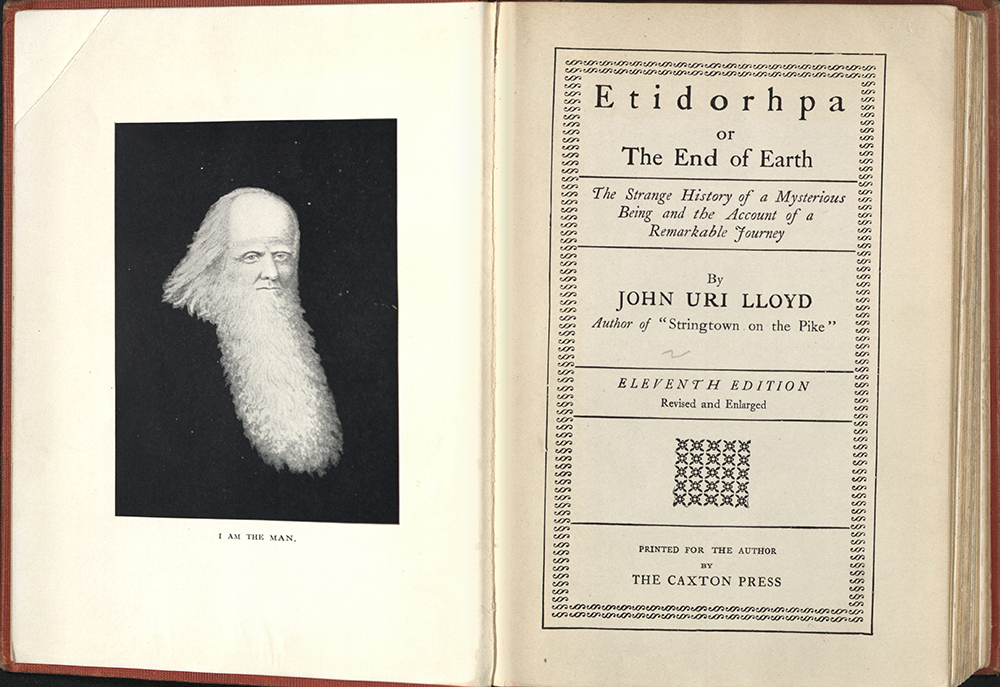 This post is part of an ongoing series featuring items from the Julio Mario Santo Domingo collection.
This post is part of an ongoing series featuring items from the Julio Mario Santo Domingo collection.
Today’s feature is Etidorhpa, or The end of the earth, a fantastical novel by pharmacologist John Uri Lloyd, written in the hollow-earth mold of Jules Verne’s Journey to the center of the earth. The title is, as observant readers will have noticed, the reverse of ‘Aphrodite’, calling to mind also Samuel Butler’s satirical fantasy Erewhon, which also concerns a fictional realm. Our protagonist, calling himself only I-Am-The-Man, dictates his bizarre adventure to the narrator, Llewyllyn Drury: he is kidnapped by a secret society, whose agent alters his appearance and escorts him through a series of fantastic subterranean lands, accessed through a cave opening in Kentucky. As it transpires, the secret society is in contact with a race of eyeless, humanoid beings dedicated to preserving knowledge for the future enlightenment of mankind. Philosophical debate and declamations on the human condition punctuate the adventure as the troglodyte reveals to I-Am-The-Man spiritual and cosmic truths.
The fictional Drury, for his part, promises to publish I-Am-The-Man’s narrative but fails to deliver, leaving Lloyd to complete the task. The resulting metanarrative even includes as one of its illustrations a facsimile of I-Am-The-Man’s original ‘manuscript’. The premise of a secret society abducting a man who knows too much may have been drawn from the disappearance of William Morgan amid the anti-Masonic movement of the mid-19th century in America.
Editorhpa found a good deal of success in its time: first published in 1895, it saw eighteen editions. The Santo Domingo copy is from the eleventh, printed in 1901.
John Uri Lloyd. Etidorhpa, or, The end of the earth. New York: Dodd, Mead and Company, 1901. PZ3.L775 E6 1901.
Thanks to rare book cataloger Ryan Wheeler for contributing this post.



